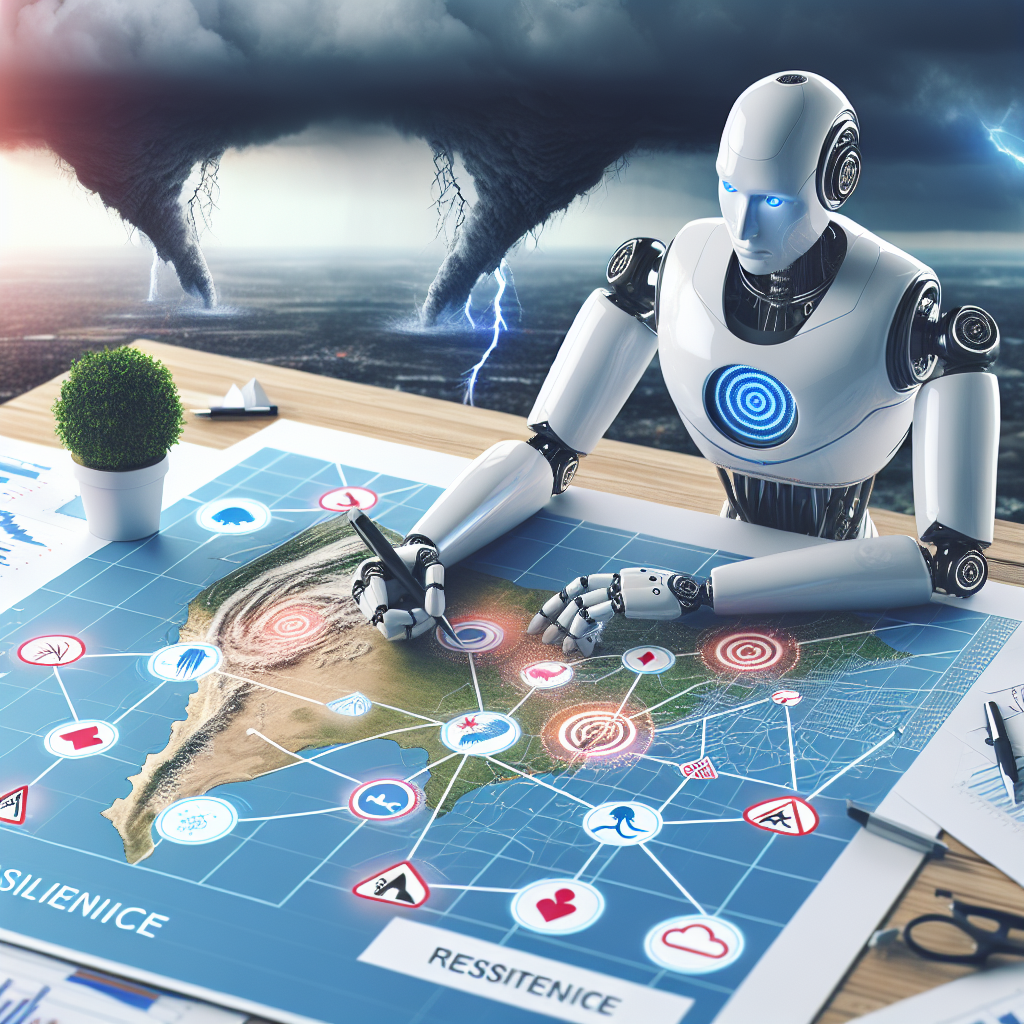Artificial Intelligence (AI) has the potential to revolutionize disaster preparedness and response efforts by enhancing resilience and improving response times. With the increasing frequency and intensity of natural disasters such as hurricanes, wildfires, and earthquakes, it is crucial for governments, organizations, and communities to leverage AI technologies to better prepare for and respond to these events.
AI can be used in various ways to enhance disaster preparedness. One of the key applications of AI in this context is predictive analytics. By analyzing historical data and real-time information, AI algorithms can predict the likelihood and impact of future disasters. This can help authorities and organizations to better allocate resources, plan evacuation routes, and implement mitigation measures.
Furthermore, AI can be used to improve early warning systems. By analyzing data from sensors, satellites, and other sources, AI algorithms can detect early signs of impending disasters and issue timely alerts to at-risk populations. This can significantly reduce the loss of life and property damage in the event of a disaster.
In addition, AI can be used to optimize resource allocation during disaster response efforts. By analyzing real-time data on the ground, AI algorithms can help authorities to identify the most critical areas in need of assistance and allocate resources accordingly. This can help to ensure a more efficient and effective response to disasters.
Moreover, AI can be used to enhance communication and coordination among response teams. By providing real-time data and insights, AI technologies can help different agencies and organizations to collaborate more effectively and make better-informed decisions during disaster response efforts.
Overall, AI has the potential to revolutionize disaster preparedness and response efforts by enhancing resilience, improving response times, and saving lives. However, there are also challenges and concerns associated with the use of AI in this context. It is crucial for governments, organizations, and communities to address these challenges and ensure that AI technologies are used responsibly and ethically in disaster preparedness and response efforts.
Frequently Asked Questions (FAQs):
Q: How can AI help in predicting natural disasters?
A: AI can help in predicting natural disasters by analyzing historical data, real-time information, and other sources to identify patterns and trends that indicate the likelihood and impact of future disasters.
Q: How can AI improve early warning systems for disasters?
A: AI can improve early warning systems for disasters by analyzing data from sensors, satellites, and other sources to detect early signs of impending disasters and issue timely alerts to at-risk populations.
Q: How can AI optimize resource allocation during disaster response efforts?
A: AI can optimize resource allocation during disaster response efforts by analyzing real-time data on the ground to identify the most critical areas in need of assistance and allocate resources accordingly.
Q: How can AI enhance communication and coordination among response teams during disasters?
A: AI can enhance communication and coordination among response teams during disasters by providing real-time data and insights to help different agencies and organizations collaborate more effectively and make better-informed decisions.
Q: What are some of the challenges and concerns associated with the use of AI in disaster preparedness and response efforts?
A: Some of the challenges and concerns associated with the use of AI in disaster preparedness and response efforts include data privacy and security, ethical considerations, potential biases in AI algorithms, and the need for appropriate training and expertise in using AI technologies effectively.
In conclusion, AI has the potential to revolutionize disaster preparedness and response efforts by enhancing resilience, improving response times, and saving lives. By leveraging AI technologies in predictive analytics, early warning systems, resource allocation, and communication and coordination, governments, organizations, and communities can better prepare for and respond to natural disasters. However, it is crucial to address the challenges and concerns associated with the use of AI in this context and ensure that AI technologies are used responsibly and ethically to enhance disaster preparedness and response efforts.

